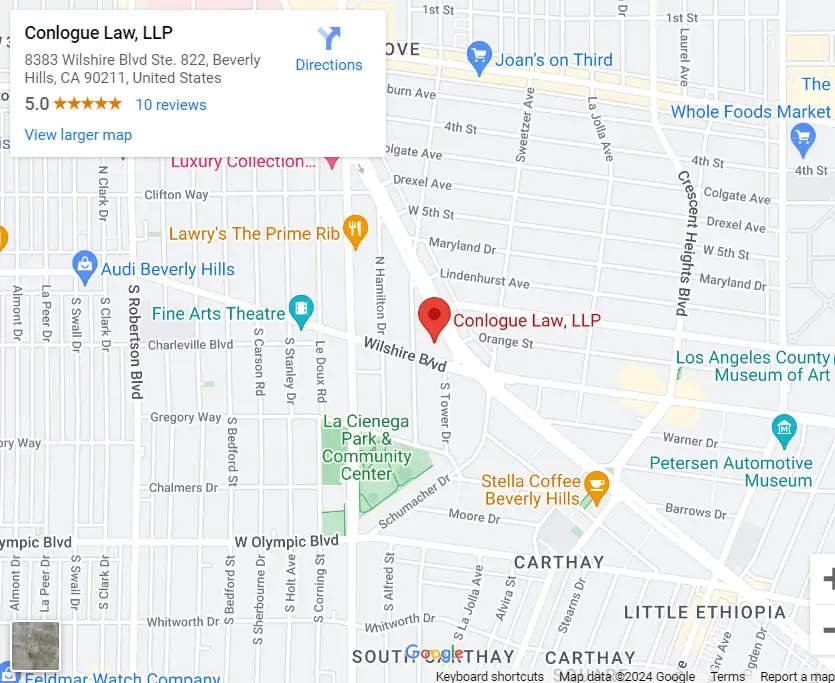When Pain Goes Beyond the Physical: The Hidden Wounds of Trauma
The aftermath of an accident extends far beyond visible injuries. While broken bones heal and bruises fade, the psychological impact can linger for months or years afterward. A Beverly Hills personal injury lawyer frequently observes how emotional suffering can sometimes exceed physical pain in its lasting impact on a person’s life.
Many accident victims in Beverly Hills struggle with anxiety, depression, and post-traumatic stress that profoundly affects their quality of life. Yet proving emotional damage in lawsuits remains one of the most challenging aspects of personal injury cases.
Quick Summary:
- Emotional distress is serious mental suffering caused by someone else’s actions, going beyond simple upset to affect a person’s daily life. It can lead to symptoms like anxiety, depression, grief, and insomnia, which can last for a long time and severely impact one’s mental and physical health.
- California law recognizes two types of emotional distress claims: Intentional Infliction of Emotional Distress (IIED), which involves extreme and deliberate actions that cause harm, and Negligent Infliction of Emotional Distress (NIED), where harm results from careless behavior without an intent to hurt. Both types involve serious emotional harm, but the degree of intentionality differs.
- To win a case based on emotional distress, it’s essential to provide strong evidence. This may include medical records, expert opinions, and personal accounts from friends or family, all of which help prove how the emotional distress has affected the individual’s life.
- People who suffer from emotional distress may be entitled to compensation, which, although harder to measure than physical injuries, can be just as significant. The compensation depends on the severity of the distress, its impact on daily life, and how long it lasts.
- The amount of compensation for emotional distress depends on factors like how severe and long-lasting the distress is and how much it disrupts daily activities. Physical symptoms that come with emotional distress, like insomnia or headaches, can also strengthen the claim and affect the compensation amount.
What Is Emotional Distress?
Emotional distress refers to serious mental pain caused by another person’s actions. It’s more than just feeling upset—it can be overwhelming, long-lasting, and significantly impact your daily life. Some common symptoms of emotional distress include:
- Anxiety: Feeling constantly on edge, panicked, or unable to relax.
- Depression: Persistent sadness, hopelessness, or loss of interest in things you once enjoyed.
- Humiliation: Deep embarrassment or shame caused by another person’s actions.
- Grief: Intense sorrow, especially after a traumatic event.
- Insomnia: Difficulty sleeping due to stress, nightmares, or fear.
Types of Emotional Distress Claims in California
California law recognizes two types of emotional distress claims: Intentional Infliction of Emotional Distress (IIED) and Negligent Infliction of Emotional Distress (NIED). IIED happens when someone’s actions are so extreme and outrageous that they intentionally or recklessly cause severe mental suffering. NIED occurs when a person’s careless behavior leads to significant emotional harm, even if they didn’t mean to cause distress.
Intentional Infliction of Emotional Distress (IIED)
Intentional Infliction of Emotional Distress happens when someone’s actions are so extreme and outrageous that they are considered unacceptable in a civilized society. The law defines “outrageous” behavior as something that goes beyond the bounds of decency—like spreading terrible lies about someone to ruin their life or threatening a person in a way that causes severe mental suffering.
An example of this world is if a landlord evicts a tenant knowing they have nowhere to go and mocks them about becoming homeless, that could be considered IIED.
If you’re going after an IIED claim, you’ll need to show that certain things happened. These steps are important to prove that the other person’s actions went too far and caused you real emotional harm:
- The other party acted in an extreme and outrageous way.
- The intent was to cause harm (or at least there was reckless disregard for the harm it would cause).
- The emotional distress was severe and directly caused by those actions.
Negligent Infliction of Emotional Distress (NIED)
There is NIED when someone causes emotional distress through carelessness rather than intentional harm. Unlike IIED, the person didn’t mean to cause suffering, but their negligence led to serious emotional damage.
For example, a driver texting behind the wheel crashes into another car, seriously injuring a passenger. If the passenger developed PTSD after the car accident and is terrified of driving, this could qualify as NIED.
In California, there are two different ways you can make an NIED claim. These have been laid out in a past court case and give you options depending on your situation:
- Direct Victim Claim: You were harmed due to someone else’s negligence.
- Bystander Claim: You witnessed a close family member get injured due to negligence, and it caused you severe emotional distress.
Proving Emotional Damage in Lawsuits
Proving emotional distress in a personal injury case requires strong evidence, as mental suffering isn’t as visible as a physical injury. Courts rely on documentation and testimony to determine the severity of a person’s emotional pain.
Key Evidence for Emotional Distress Claims
When pursuing an emotional distress claim, it is important to present strong evidence that clearly shows the impact the distress has had on a person’s life. To support your emotional distress claim, the following types of evidence can help you:
- Medical and Therapy Records – Notes from doctors, therapists, or psychiatrists can show a diagnosis of anxiety, PTSD, depression, or other conditions linked to the incident.
- Expert Testimony – Mental health professionals can explain how the distress has affected daily life, relationships, or the ability to work.
- Personal Documentation – Journals, text messages, emails, or witness statements from friends, family, or coworkers can show how a person’s mental state has changed over time.
Compensation for Emotional Distress
Emotional distress is a real and serious issue that can affect a person’s mental and physical well-being. In California, people who suffer emotional harm because of someone else’s actions may be able to receive compensation. Since emotional distress is personal and varies from person to person, proving emotional damage in lawsuits can be challenging. However, just because emotional suffering is harder to measure doesn’t mean it isn’t important.
Emotional distress can show up in different ways, and California courts recognize its impact on people’s lives. Depending on the situation, a person may experience various forms of emotional suffering, such as anxiety, grief, humiliation, shock and or fear.
These damages are often included under the umbrella of pain and suffering, a term that encompasses both physical and emotional harm. Courts recognize that emotional pain is real, even though it can’t be as easily measured as things like medical expenses or lost wages. As the court in Capelouto v. Kaiser Foundation Hospitals noted, jurors must rely on their “impartial conscience and judgment” when awarding such damages.
Factors Affecting Compensation
Not everyone receives the same amount of money for emotional distress. The amount depends on different factors, including how severe the suffering is and how much it affects daily life.
- How Severe and Long-Lasting the Distress Is
Emotional distress can last for a short time or continue for years, depending on the situation. The longer and more intense the suffering, the higher the potential compensation.
- How It Impacts Daily Life
Emotional distress can make it difficult to work, maintain relationships, or perform simple daily tasks. If someone struggles with basic activities, they may be entitled to greater compensation.
- Physical Manifestations of Emotional Distress
Some people experience physical symptoms along with emotional suffering, such as insomnia, headaches, or digestive problems. These symptoms can strengthen a claim and serve as evidence of distress.
- Causal Connection to the Defendant’s Actions
To receive compensation, a person must show that their emotional distress was directly caused by the defendant’s actions. California law requires strong evidence, especially when seeking damages for future emotional suffering.
Get the Support You Need From A Beverly Hills Personal Injury Lawyer
Emotional suffering deserves recognition and compensation just as physical injuries do. If you’re struggling with the psychological aftermath of an accident, don’t face this challenge alone. The path to proving emotional damage in a lawsuit requires help from a Beverly Hills personal injury lawyer.
Conlogue Law LLP knows the complex interplay between physical and emotional trauma. We work diligently to ensure your complete story is told—not just the visible injuries but the emotional toll as well. Your journey towards receiving the justice you deserve starts with us.








